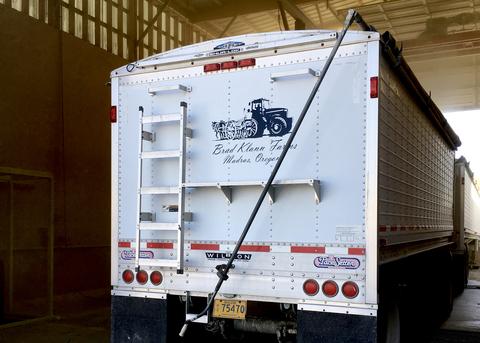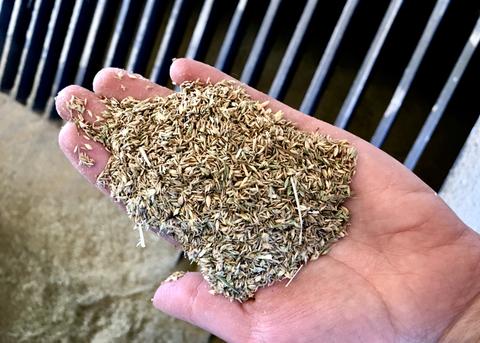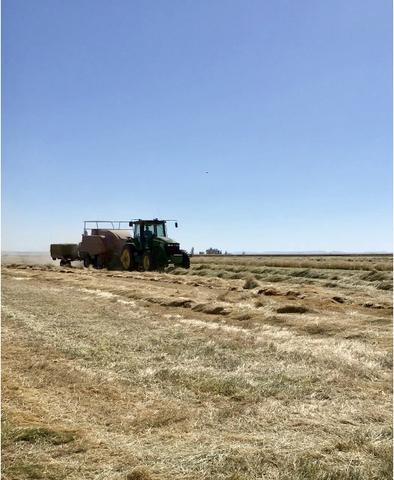Contrary to popular belief, barley, wheat and rye are not the main crops grown on our farm. Kentucky Bluegrass is the main seed crop grown, and the grains are used as rotational crops. This year alone, we had around 750 acres of Kentucky Bluegrass to be harvested. KBG generally stays in the ground for 4-5 years and then is taken out and replaced with a grain crop. Crop rotations are used to help prevent disease and weed resistance as well as to help restore and provide certain nutrients back into the soil.
In our previous post, we explained the process of swathing, now you will learn about combining, where the seed goes after it leaves the fields and baling.
Kentucky Bluegrass is harvested using a tractor called a combine. Combines have large headers on the front of the machine that feed the windrows of cut grass into the machine, where the seed is then thrashed from the stalk. The seed is then stored in a large bin (under the red top) until it is full and ready to be dumped.
Once the combine is full, the driver empties its bin of seed into semi-trailers. After the semi trailers are filled they are then taken into the seed processing and cleaning facility to be dumped.
Upon arriving at the seed cleaners, the semi is weighed so they can know how much seed was brought in. After it is weighed, it goes into "the pit" to be dumped. Each trailer has a contraption on the bottom that opens with a crank, where the seed empties from.
The seed is then unloaded into a pit where it is transferred and stored in its own bin until it is ready to be cleaned. The dumping process generally does not take very long but if there are multiple trucks in line, it can be a LONG and HOT wait.
This is what Kentucky Bluegrass seed looks like before it is cleaned. When it is ready to be cleaned it is ran through a series of screenings, decreasing with size each time to clean out the chaff and other particles, until finally you just have the seed. Kentucky Bluegrass seed is sought after for its beautiful blue green color and lushness. This seed is exported all over the country and world and used for lawns, sports fields and golf courses. It has even been used to seed Olympic sports fields and the Pasadena Rose Bowl!
After all of the seed is thrashed from the windrows, the remaining straw is then baled into large bales. Baling generally takes place at night when it is not too dry and there is some dew on the grass. If the grass becomes too wet though, baling has to be finished in the morning when it starts to dry out again. You do not want to put up wet bales as it can pose multiple problems, like mildew and even hay fires.
The hay bales are then stacked for customers to come and get from the field. Some is also hauled away and delivered by the farm. The hay is mainly used to feed rancher's cattle and horses.







